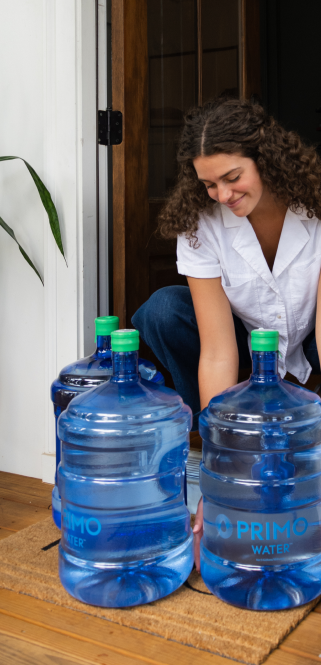
Prone to Headaches and Migraines?
Why Water Should be Part of Your Pain-Relieving Arsenal
Get Frequent Headaches? Join the Club
Most people experience occasional headaches. The World Health Organization estimates that just over half the population of the world does! Here are the main classifications of headaches. See if you can identify which type pesters you:
Tension-Type Headache – most common, may exhibit as a dull ache, a band of pressure or pain in both temples
Sinus Headache – pain and pressure in the sinus cavity/nasal area, can accompany swelling in eyes and sometimes even upper gums
Cluster Headache – pain associated with nasal congestion or tearing of the eye, pain occurs on the same side of the head as the condition and may come and go
Migraine – Severe pain, nausea, sensitivity to light and sound; strikes women three times more often than men
Dehydration Headache – one you might not know about, see below
And just to be sure you are aware: Thunderclap Headache – a sudden horrific pain that comes on in 60 seconds or less, could indicate a subarachnoid hemorrhage, aneurysm, stroke or other serious condition. Seek emergency medical attention immediately!
Dehydration Headache
The Dehydration Headache is caused when the brain pulls away from the skull due to shrinkage from—you guessed it–lack of water. It can accompany the main types of headaches or stand alone. If you recognize the cause, the cure is simple. Hydrate—and fast! Drinking water will bring relief whereas over the counter pain relievers may exacerbate the problem. Here are some causes that will help you identify this pesky head pounder:
Heavy sweating – be especially aware in hot weather or during excessive exercise
Frequent urination – may be caused by caffeine intake, alcoholic beverages, certain foods and, of course, diuretic medication
Fever – be especially aware of dehydration if your infant or child has a temperature
Diarrhea or vomiting
Drinking Water as a Preventive Measure for Headaches
Your body needs to maintain a natural balance—as you lose fluids, they must be replenished. Doctors typically recommend that we drink 4 to 6 cups of water a day. Some Gynecologists and GPs bump that up to 8 cups a day for women. Not all at once; spread intake throughout the day to maintain balance with what you lose through sweat and urination. If you are doing yard work in the summer heat, it’s a no-brainer that you should keep water readily available and stop to drink often. Cool water also serves to bring down your core temperature.
Often, people who are prone to headaches drink caffeine to alleviate the symptoms or take a headache pain reliever that contains a high dose of caffeine (check the label contents). If this is true of you, add water to the regimen and cut out some of the caffeine. While the steam from a cup of coffee or tea may be soothing to a throbbing head, caffeinated drinks increase urination and that may be adding to the initial cause of it! Try replacing the caffeinated coffee or tea with an herbal tea followed by a cool glass of water.
One last recommendation: if you are experiencing frequent headaches (not as debilitating as migraines, but still painful), keep a log. Track sleep patterns, activities, types of foods that preceded your headache, hormonal patterns in women, the amount of fluids you drink and when, etc. (This will also help your doctor if your pain needs medical attention). Make sure water intake is part of your preventative plan and spread it throughout the day. Being in the know may allow you to head off a headache—and that’s a good day.




